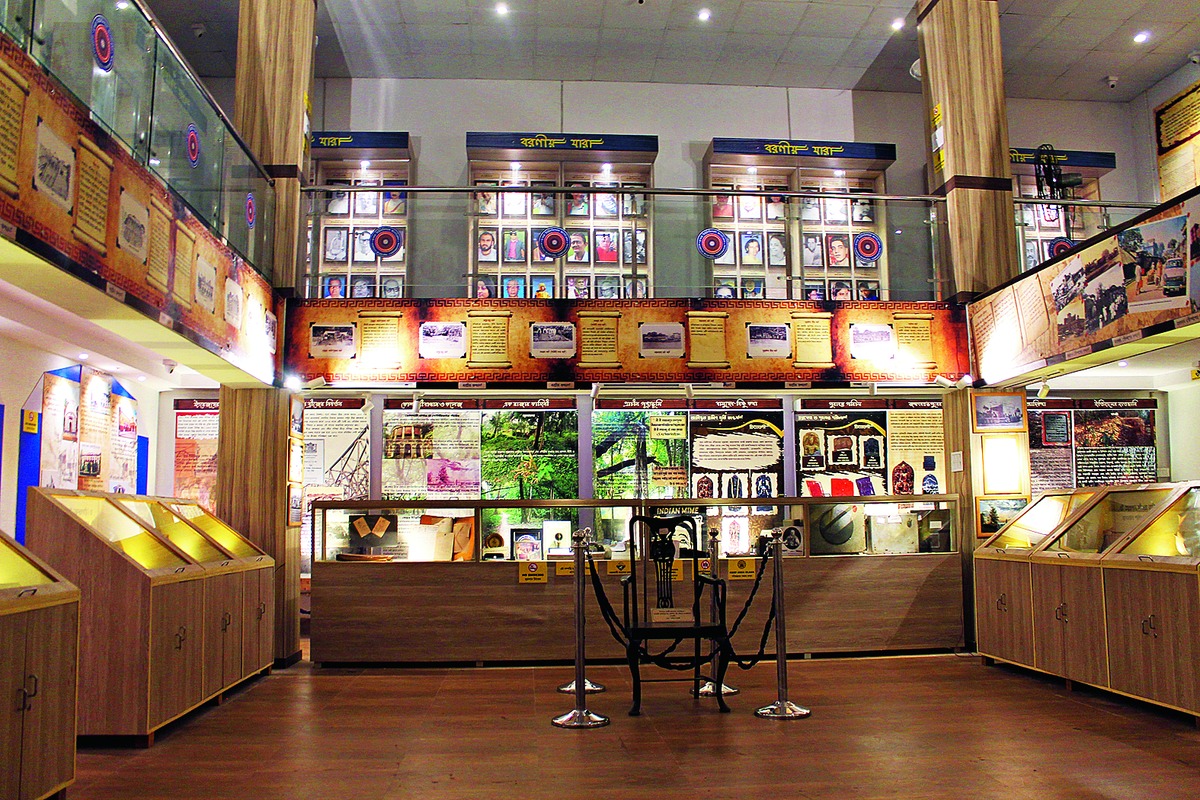
As one steps into the Howrah Municipal Corporation Archive, a stone's throw from the Howrah Railway Station, it feels a bit like escaping into a parallel universe. One minute we are being pushed and shoved by people on the road, barely avoiding getting run over by lorries, buses, autos, cars, two-wheelers, and the very next minute we are inside a sanitised, empty air-conditioned hall.
The hall is no bigger than a three-bedroom apartment. It is full of maps, photographs of 10th century terracotta temples of Harinarayanpur, Garh Bhawanipur and Bagnan. Right in the middle of the hall is a teak chair with broad curling armrests, awaiting who knows what distinguished occupant. After the initial wonderment, we notice a plaque next to it. It reads: Chair Subhas Chandra Bose used during a conference in Howrah.
The other occupants of this newly-inaugurated museum are framed photographs of luminaries dead and alive - but all with an indelible Howrah connect.
Howrah is the oldest district of Bengal. The archive, which is the brainchild of the mayor of Howrah, Rathin Chakravarty, is an attempt to put out before the public the district's 600-year-old history.
Banya Bandyopadhyay, who is the co-ordinator of the archive, tells The Telegraph about the two-fold research that has gone into this project. "One part is theory based. We have visited libraries, gone through maps, collected documents. Another part is the fieldwork - we have travelled to a lot of the places mentioned in the books, interviewed families residing in the area for generations."

One wall is covered with photographs of Bachri village, where the state archeological department carried out excavations in 2013-14 and found household items dating back to the 17th century. In a showcase beneath the photographs, there is an earthen vase, a wide-mouthed pot and a plate.
Bandyopadhyay says she and her team visited Bachri and spoke to the locals about the excavation. "From them, we came to know that people used to come across quaint bricks and earthen utensils whenever they did any digging. This led the state archaeology department to conduct an excavation. The pieces you see here are on loan from the department."
Stashed away in one of the many glass almirahs at the Howrah Archive are carved terracotta panels from temples of the area - Mellok Mandir in Bagnan, Hareshwar Mandir in Pero, Gopinath Jiu Mandir in Garh Bhawanipur - and figurines.
Purulia is known to house some of the oldest terracotta work in the country but these exhibits establish that Howrah's terracotta art is even older.
There are relatively recent items also. There is a porcelain Delphin Filter - a water purifier used in laboratories - and a copy of The Universal Homeopathic Annual. Both belong to Mahendralal Sarkar, a physician who was also known for his campaign for a national science association in the 19th century, which he hoped would be funded and managed by native Indians.
Sarkar is better known as the physician of Ramakrishna Paramhansa. His personal items have been donated to the archive by a descendant, Arun Sarkar, who is a theatre artiste.
A photocopy of Sarkar's diary from 1875 is tucked away inside one of the showcases. We learn from Bandyopadhyay that Sarat Chandra Chattopadhyay's descendant, Joy Chatterjee, has donated one of the writing pads used by the late novelist.
There are handwritten letters by novelists such as Ashapurna Devi, Tarashankar Bandyopadhyay, sketches by Nandalal Bose. There are olden books on the history of the Howrah Station - work on it began in 1901. We learn how once the station was built, in the absence of the Howrah bridge, the people of Calcutta would take a steamer to the station.
But how do visitors know what is there in the archive and what is where? All in good time, assures, Bandyopadhyay. According to her, cataloguing will happen, photo exhibits will get detailed captions and there is a plan to have a kiosk in place, where research scholars and those interested will be able to browse the digital versions of old documents and manuscripts.
Till then, Howrah's history must languish in its newly-acquired glass palace.










